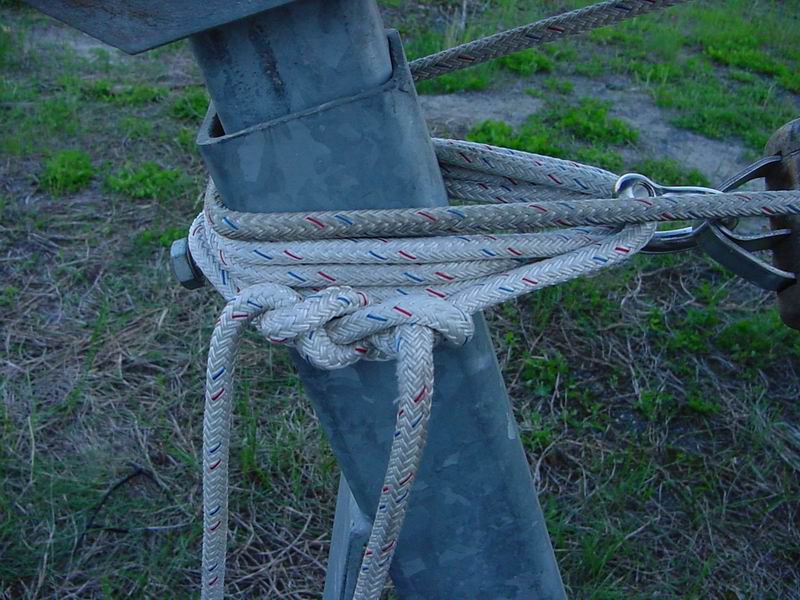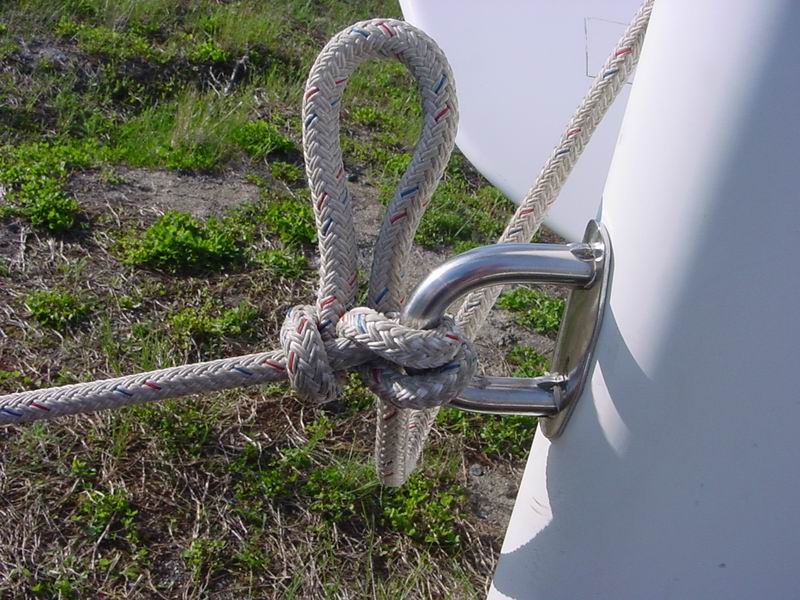To complete our discussion of heavy lifting we must address a component so vital that without it blocks would be useless, winches; mere toys, lines; just string, it just wouldn’t work without knots!
The landsman seldom rises far above learning to tie the shoelace. A Granny Knot will work. To him, the square knot is the stuff of Boy Scouts and anything long and limber is just another rope. But the sailor knows different. The sailor knows knots and he knows their varied and proper uses. The choice of the proper knot is the choice between success and disaster at sea. As Clifford Ashley put it, “A knot is either perfectly right or hopelessly wrong.” I remember hearing a Coast Guard Chief Boatswain’s Mate say as we passed a jumbled heap of lines jammed this way and that around a cleat to secure a very nice and expensive yacht to its moorings, “If you can’t tie a knot, tie a lot!”
I used two knots and two knots only in rigging to move the CAP’T LEM, the carrick bend and the swifter hitch.
I secured the block and tackle to the winch post on the trailer using a short line by taking it around the winch post and through the block several times then tying the ends together with the carrick bend. Although a great deal of force is exerted on this line, the load is shared and dispersed over the several wraps and did not exert that much pressure on any one wrap. The carrick is one of those most useful of knots. Like the bowline and round turn and two half hitches, its weave and shape are second nature to the true seaman. It’s a strong beautiful knot often used as the basis of fancy rope work. It’s easy to tie and easy to untie. Most every knot a sailor uses must, at some point in time, be untied. It is in the untying that the carrick bend becomes a king among knots. Lines bent together and put under a heavy strain such as towing or anchoring can still be untied once the strain is removed when the carrick is used. Not so with the square knot!
I used the carrick bend to secure the block and tackle to the trailer. But even the carrick fails to meet the second purpose because the line must be slacked in order to untie the knot. For the second, I needed a knot that could stand the strain without coming untied, and also be easily untied while still under the strain of moving the CAP’N LEM. I also needed complete control over the line and the load to test if anything would slip when the pressure was relieved. Only the swifter hitch has the character of being untie-able while the line and knot are still under load.
So, it was the swifter hitch I used to secure the bitter end of the line to the bow of the boat for the winching process. The boat would move in relation to the trailer 6 or 7 inches and it would be time to re-block, strip off the line layered on the winch and re-set the tackle. Even though the tackle and winch would still be under this incredible strain, I could un-tie the swifter hitch, ease out enough slack to see that nothing was going to slip, re-set everything and repeat the process. To make it even easier, I tied the swifter with a slip so all was need to release the knot was a smart yank and control was instantly in my hand.
Why am I taking the time to tell you all these things in such detail? Because, there is something to be learned from getting the CAP’N LEM off the ground and back to the water. There is encouragement to be had from methodically solving problems one step at a time by reasoning through the details of the process in the mind’s eye. The principles of leverage, mechanics, force and friction are faithful and can be trusted to build the advantages needed to overcome a daunting task. And because, there is an immense satisfaction to lifting a very heavy object and putting it in its place.

The Carrick Bend

The Swifter Hitch
